Full text
PDF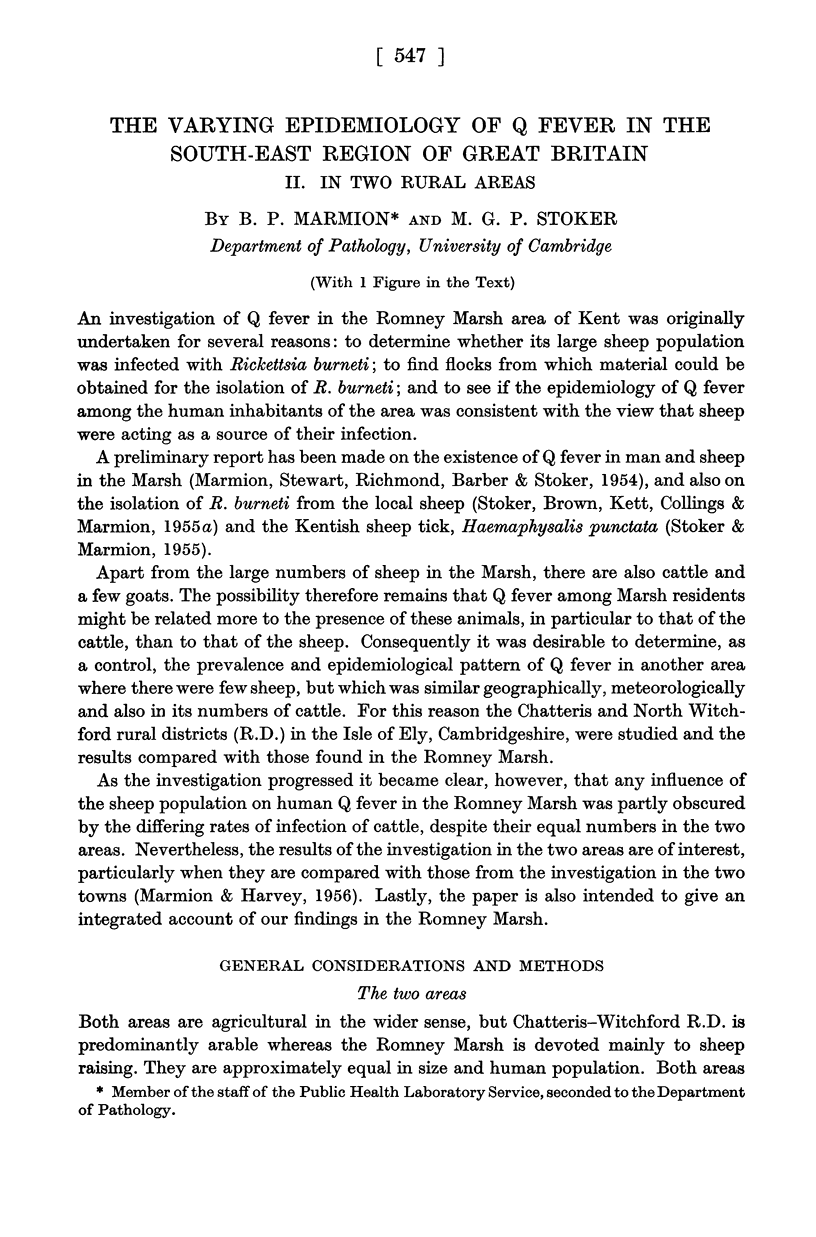
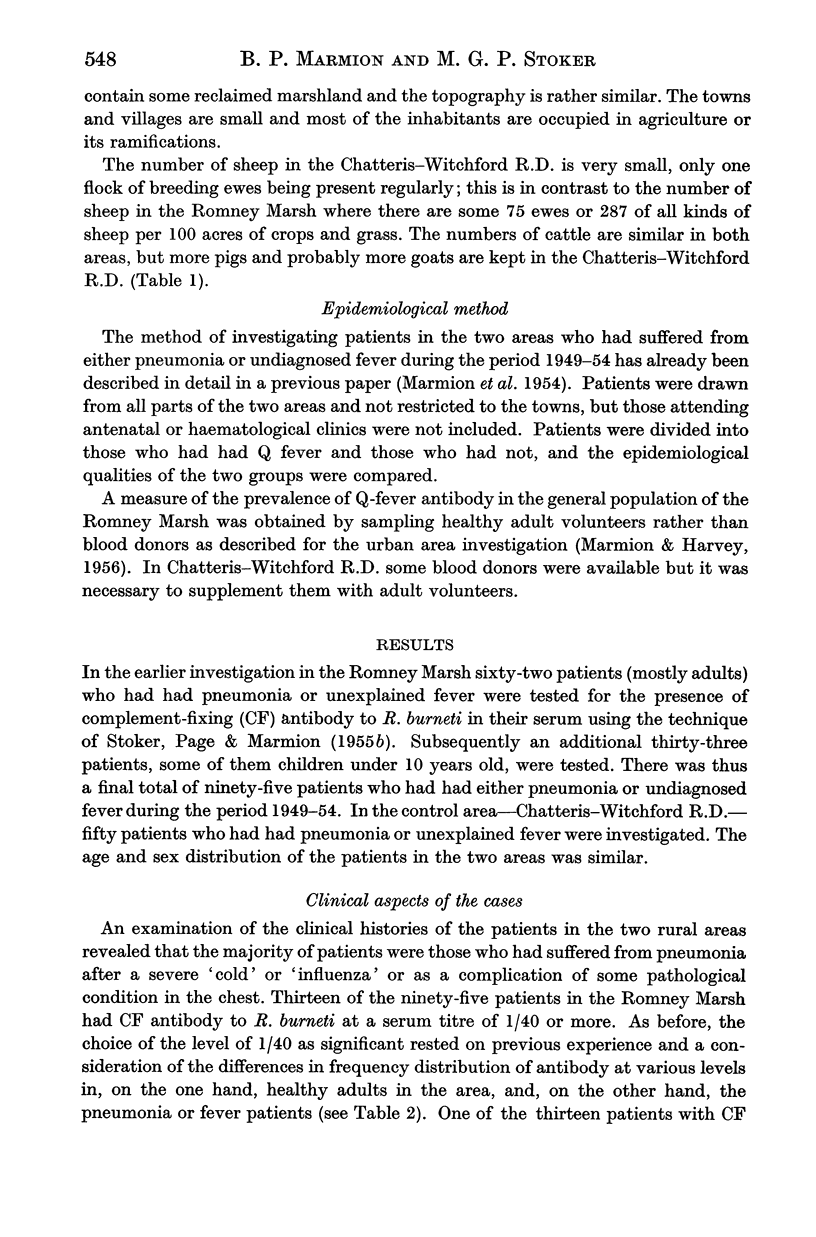
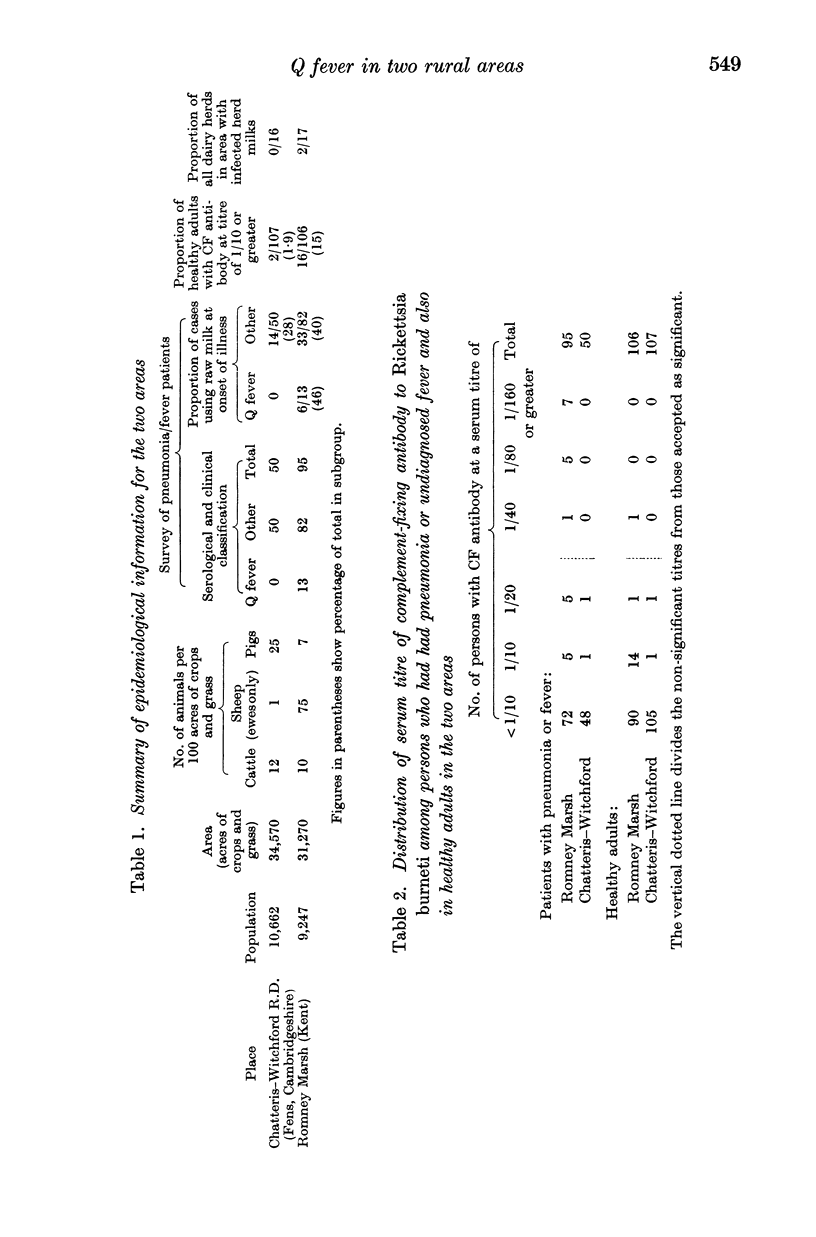
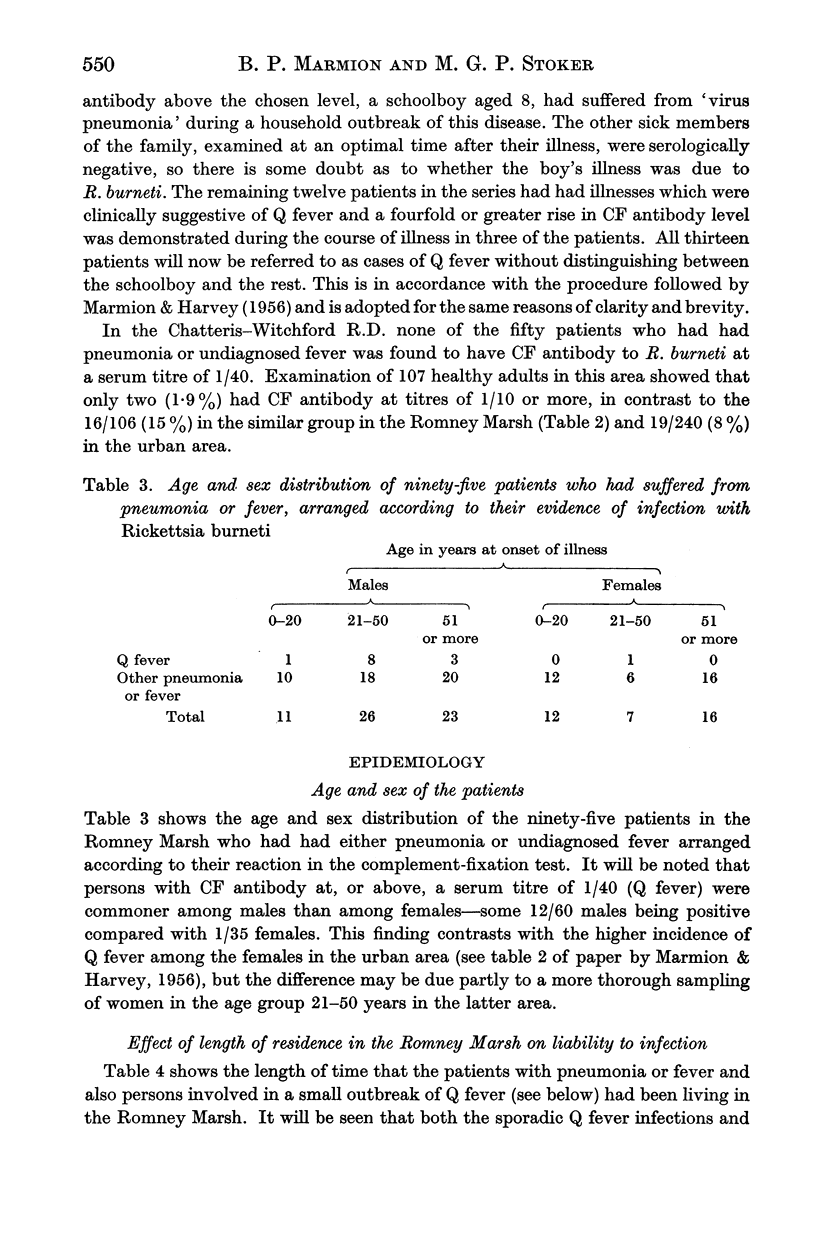
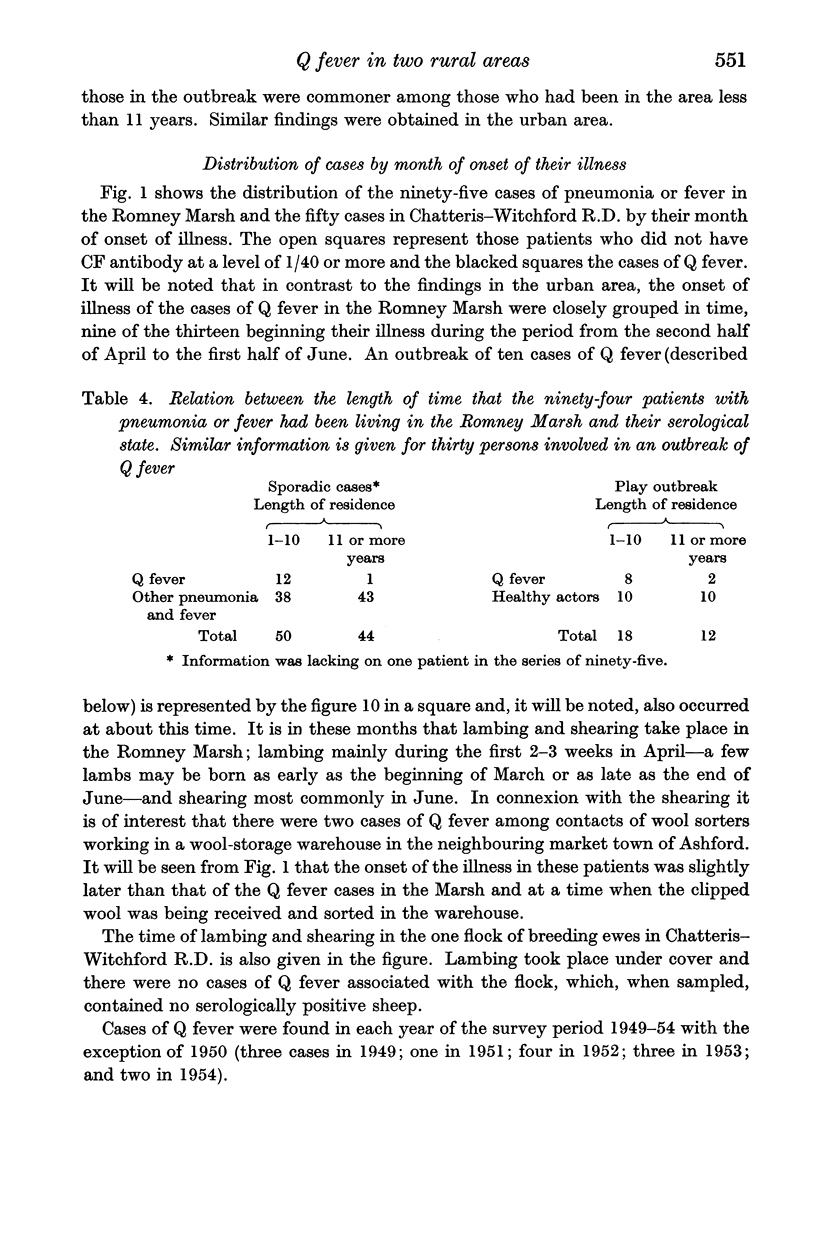
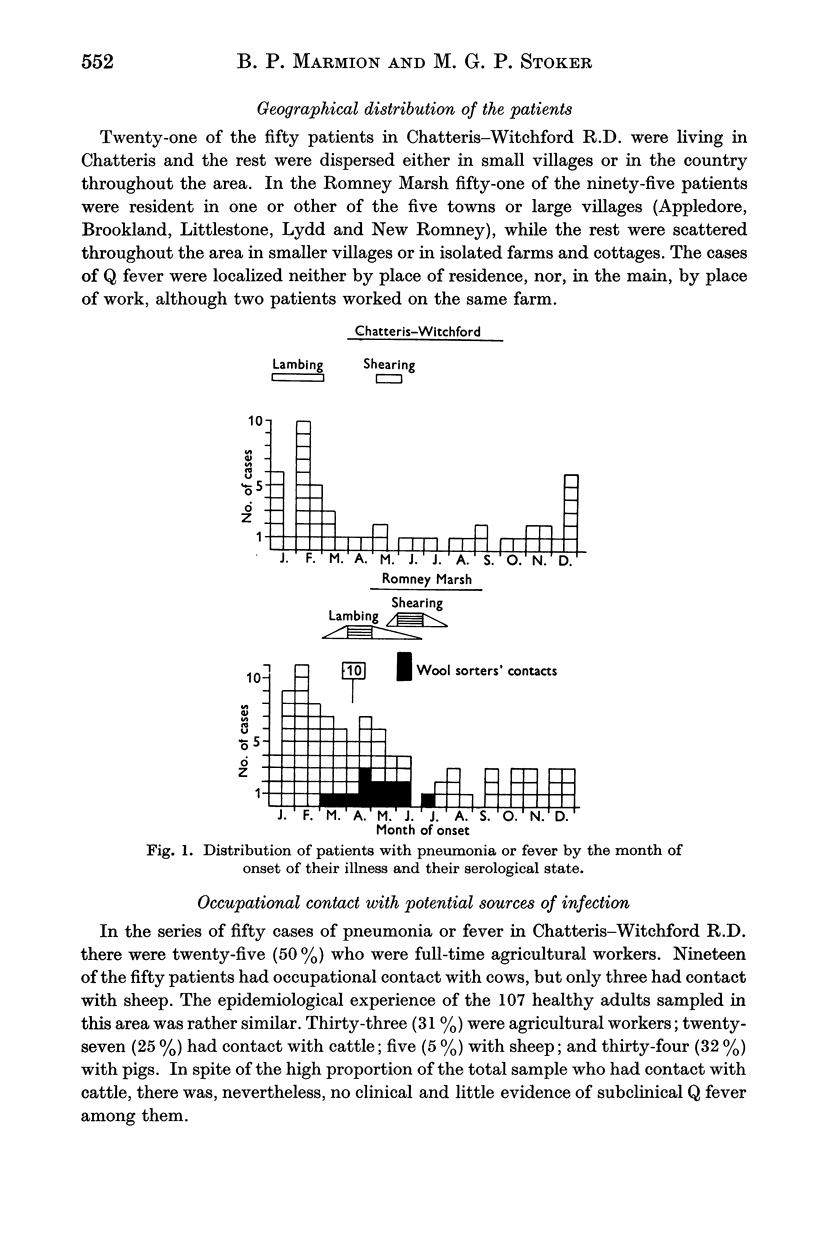
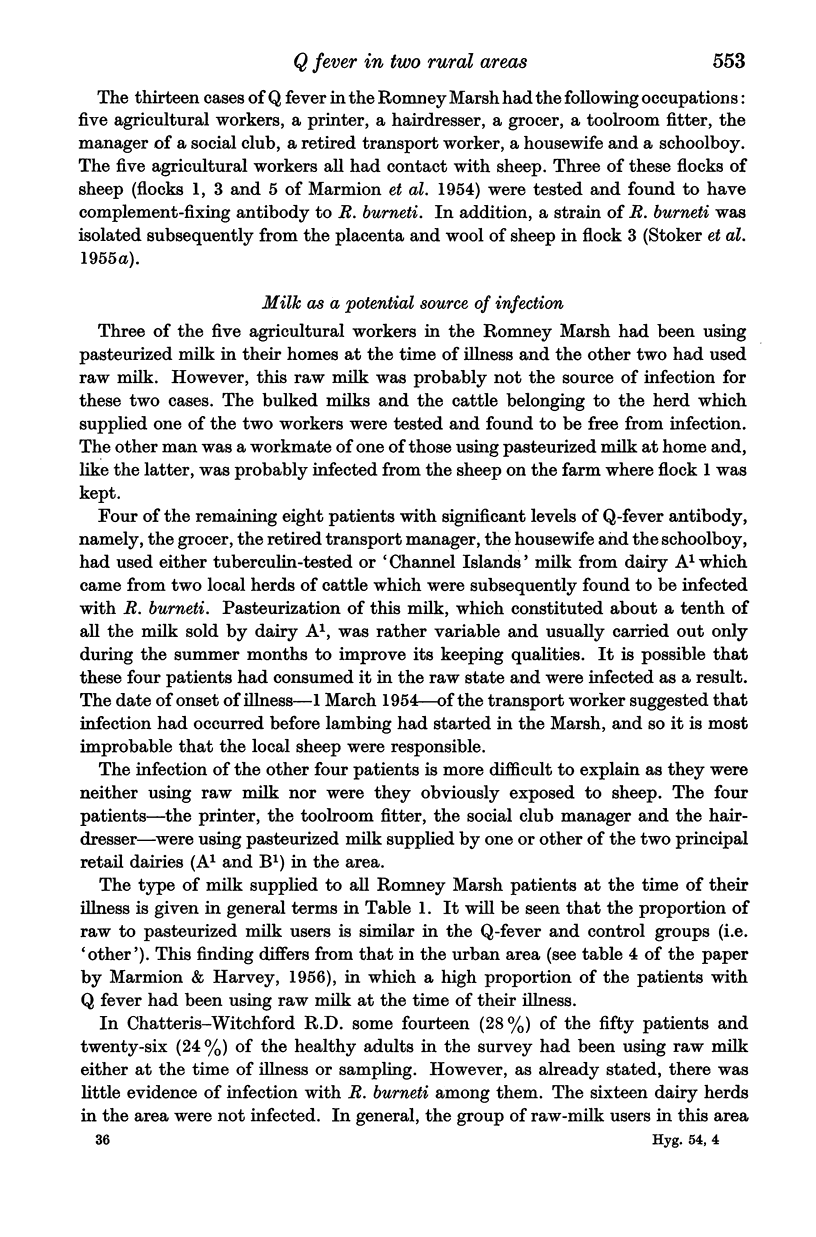
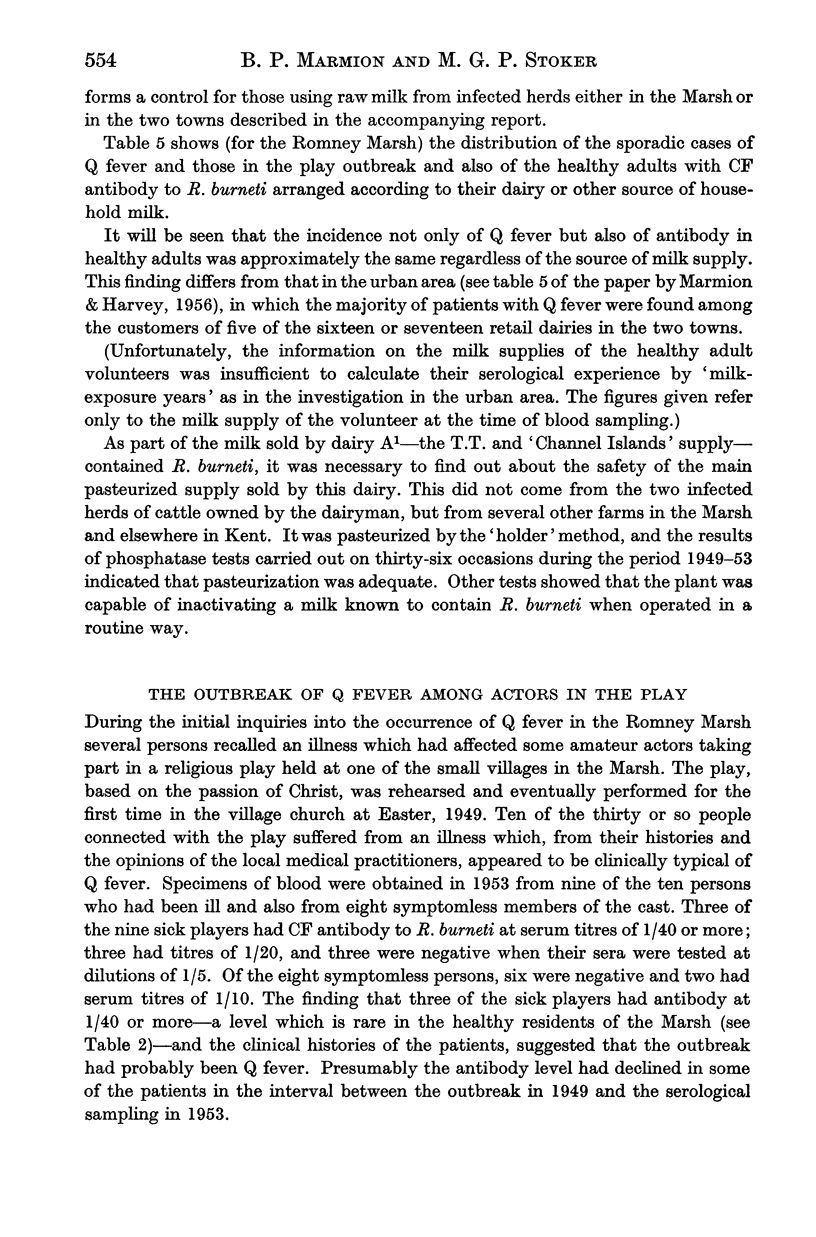
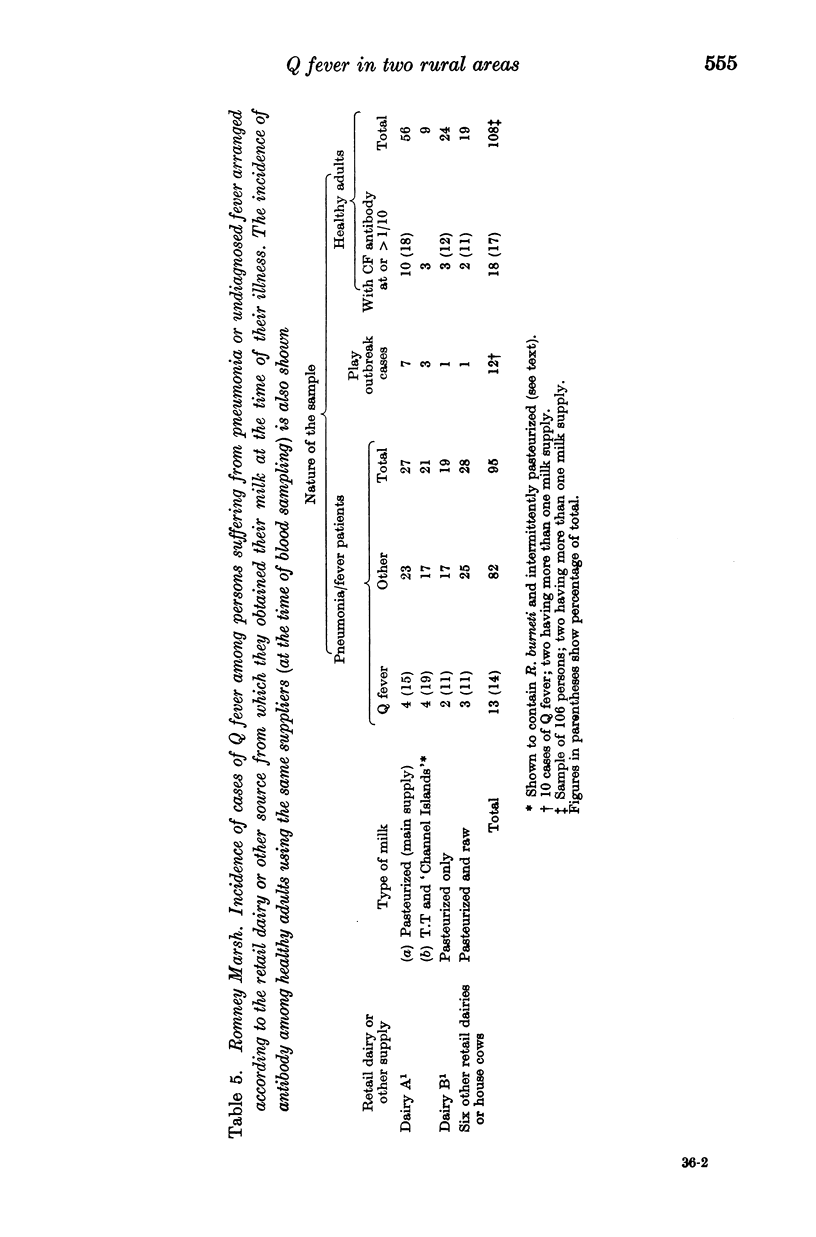
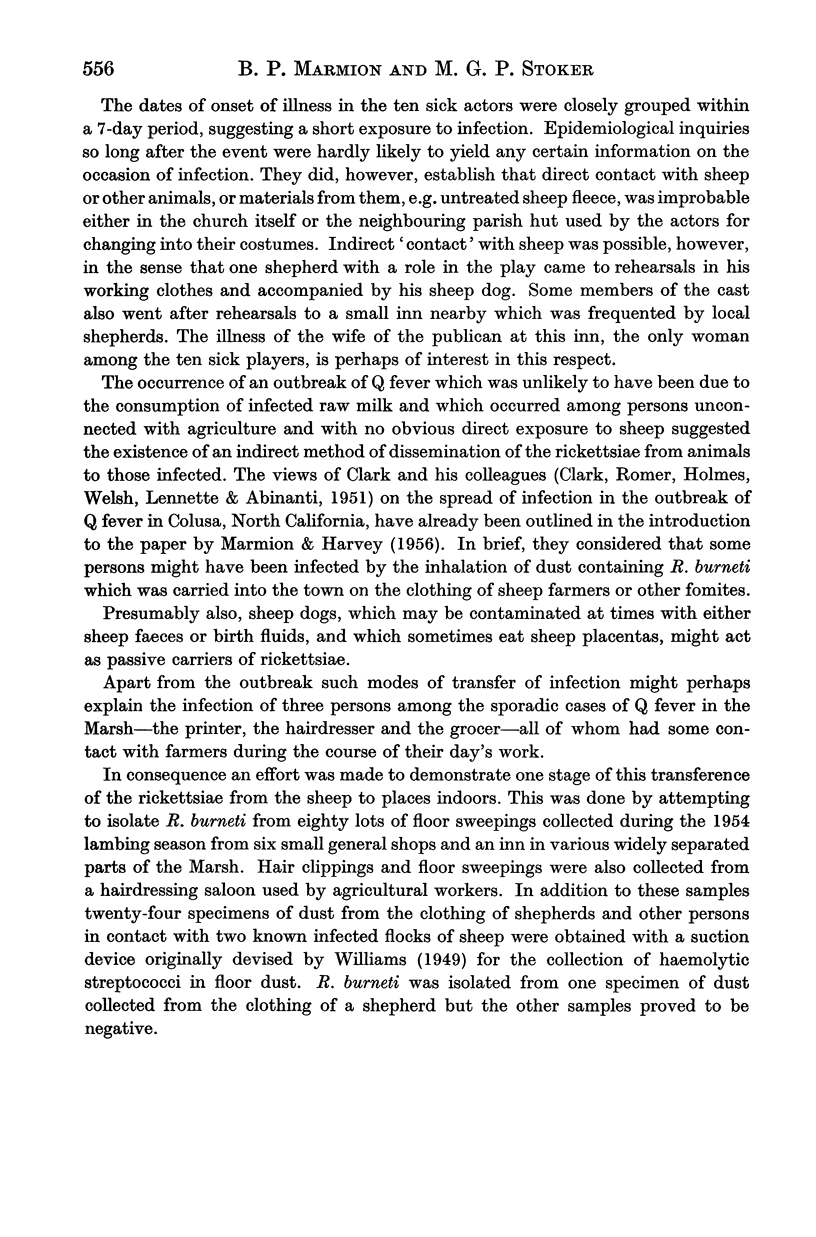
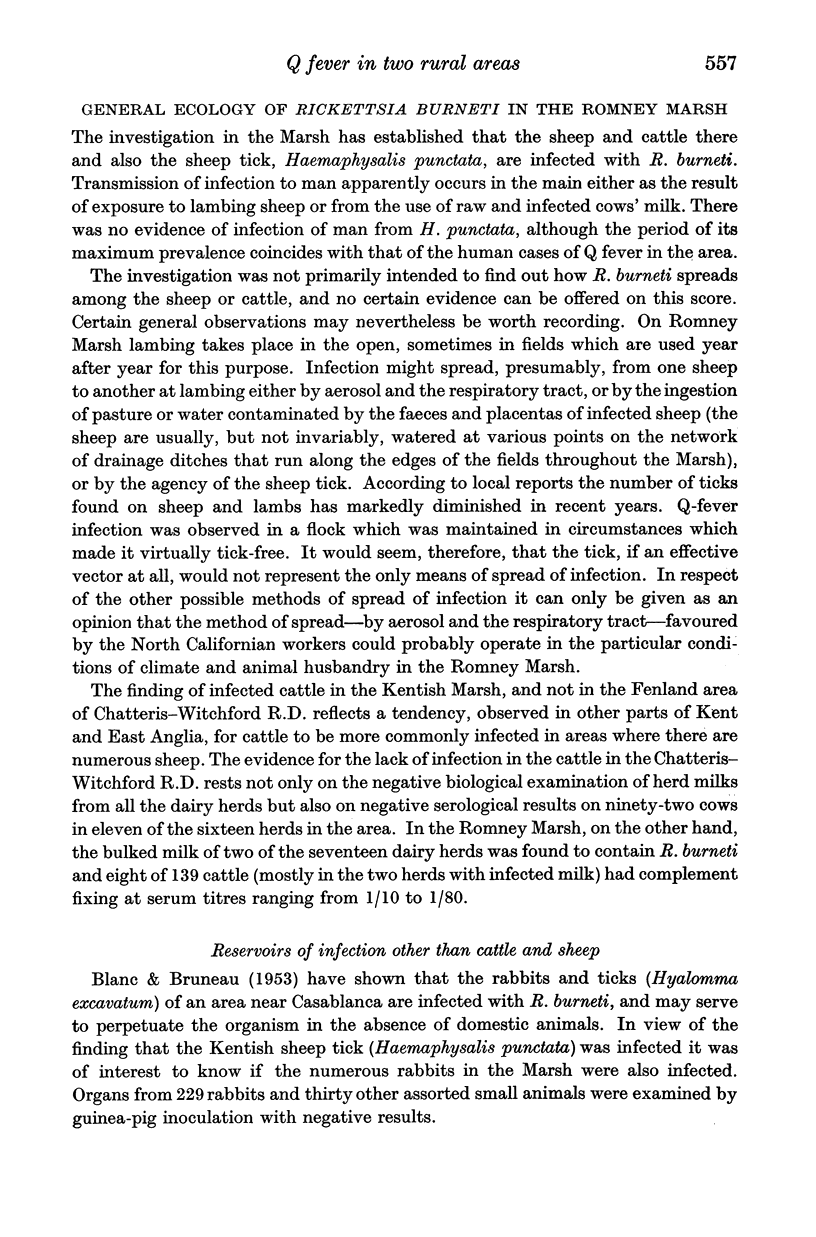
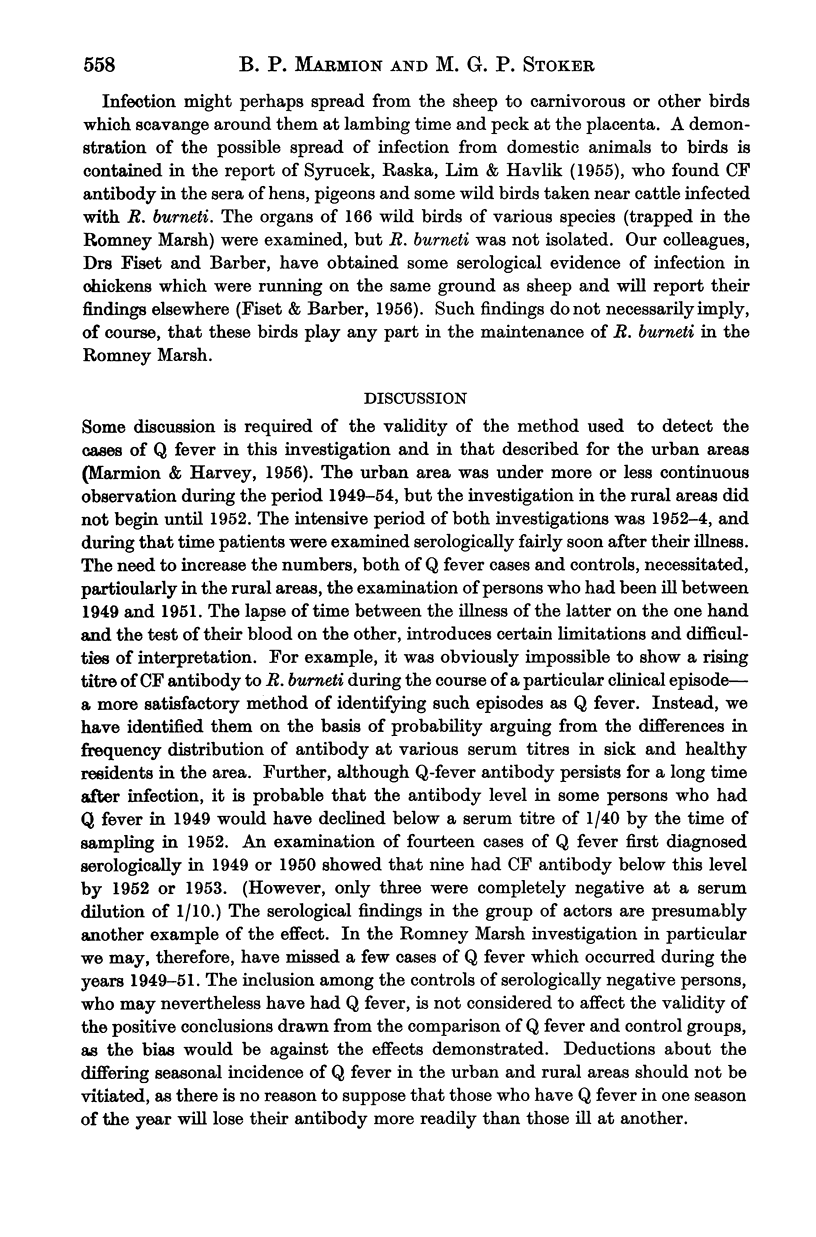
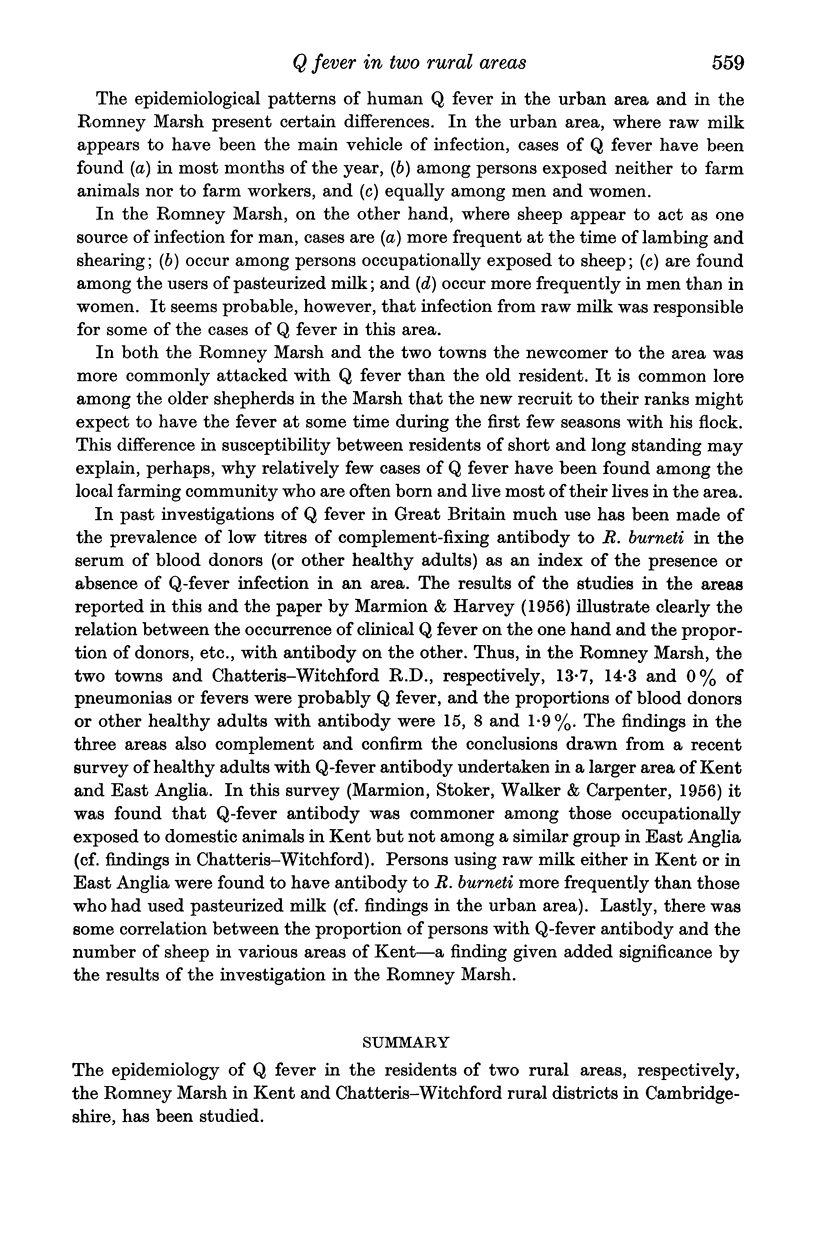
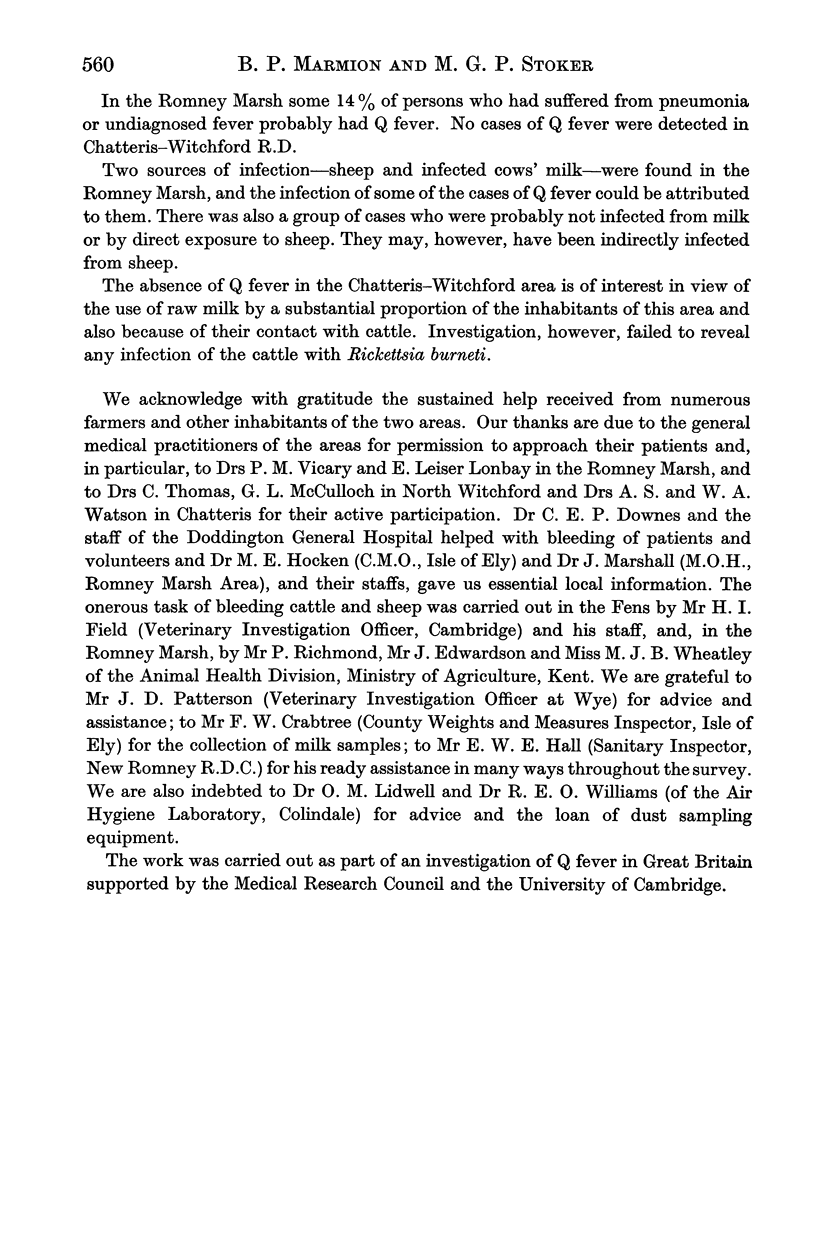
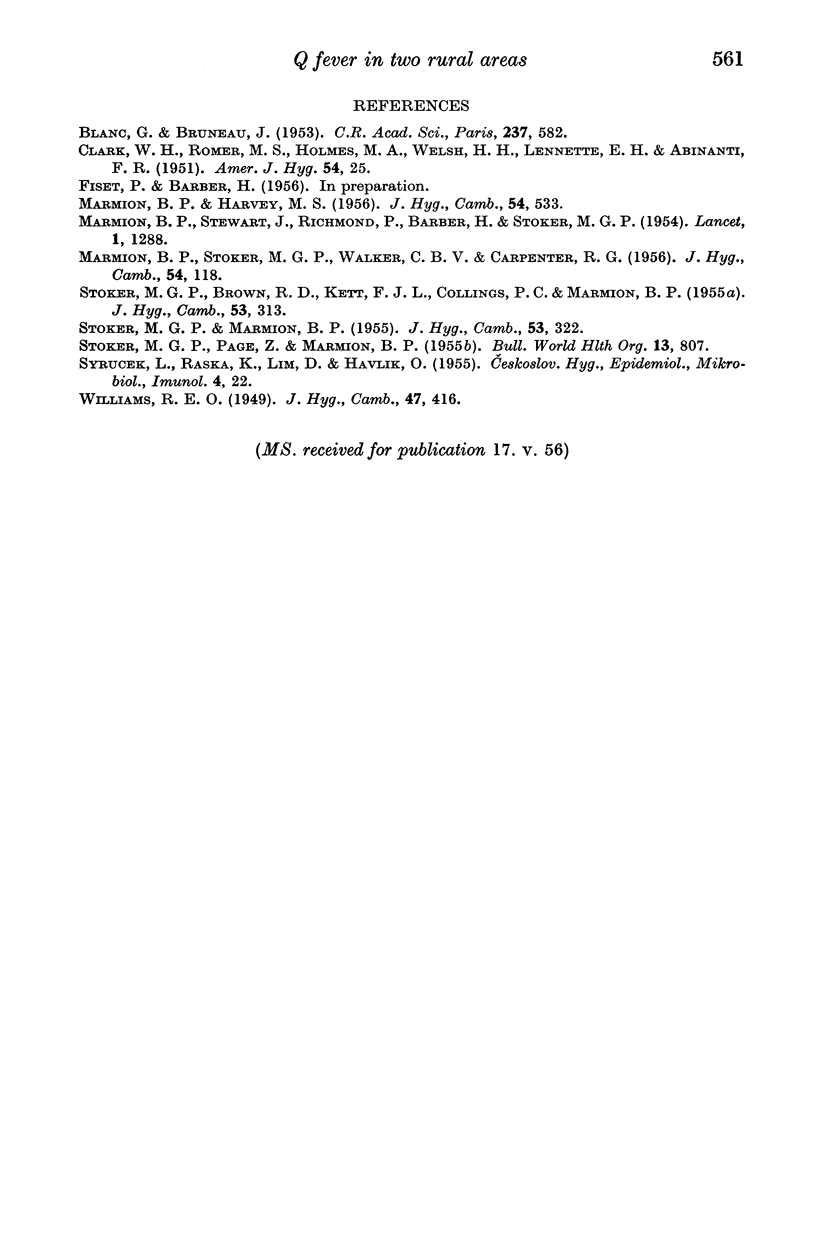
Selected References
These references are in PubMed. This may not be the complete list of references from this article.
- BLANC G., BRUNEAU J. Entretien dans la nature de Coxiella burnetii par l'association du lapin de garenne Oryctolagus cuniculus (L) et de la tique Hyalomma excavatum C. L. K. C R Hebd Seances Acad Sci. 1953 Sep 14;237(11):582–584. [PubMed] [Google Scholar]
- CLARK W. H., ROMER M. S., HOLMES M. A., WELSH H. H., LENNETTE E. H., ABINANTI F. R. Q fever in California VIII. An epidemic of Q fever in a small rural community in northern California. Am J Hyg. 1951 Jul;54(1):25–34. [PubMed] [Google Scholar]
- HARVEY M. S., MARMION B. P. The varying epidemiology of Q fever in the southeast region of Great Britain. I. In an urban area. J Hyg (Lond) 1956 Dec;54(4):533–546. doi: 10.1017/s0022172400044818. [DOI] [PMC free article] [PubMed] [Google Scholar]
- MARMION B. P., STEWART J., RICHMOND P., BARBER H., STOKER M. G. Q fever in Great Britain; sheep as a source of infection for man. Lancet. 1954 Jun 19;266(6825):1288–1291. doi: 10.1016/s0140-6736(54)92793-2. [DOI] [PubMed] [Google Scholar]
- MARMION B. P., STOKER M. G., WALKER C. B., CARPENTER R. G. Q fever in Great Britain; epidemiological information from a serological survey of healthy adults in Kent and East Anglia. J Hyg (Lond) 1956 Mar;54(1):118–140. doi: 10.1017/s0022172400044375. [DOI] [PMC free article] [PubMed] [Google Scholar]
- STOKER M. G., BROWN R. D., KETT F. J., COLLINGS P. C., MARMION B. P. Q fever in Britain: isolation of Rickettsia burneti from placenta and wool of sheep in an endemic area. J Hyg (Lond) 1955 Sep;53(3):313–321. doi: 10.1017/s0022172400000796. [DOI] [PMC free article] [PubMed] [Google Scholar]
- STOKER M. G., MARMION B. P. Q fever in Britain: isolation of Rickettsia burneti from the tick Haemaphysalis punctata. J Hyg (Lond) 1955 Sep;53(3):322–327. doi: 10.1017/s0022172400000802. [DOI] [PMC free article] [PubMed] [Google Scholar]
- STOKER M. G., PAGE Z., MARMION B. P. Problems in the diagnosis of Q fever by complement-fixation tests. Bull World Health Organ. 1955;13(5):807–827. [PMC free article] [PubMed] [Google Scholar]


